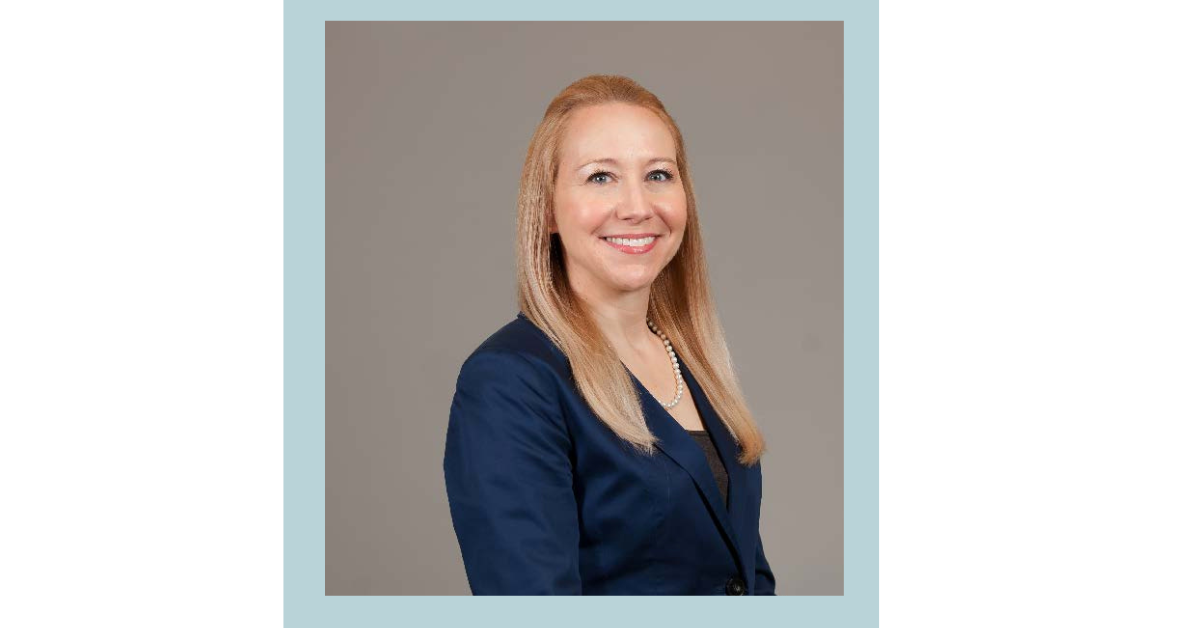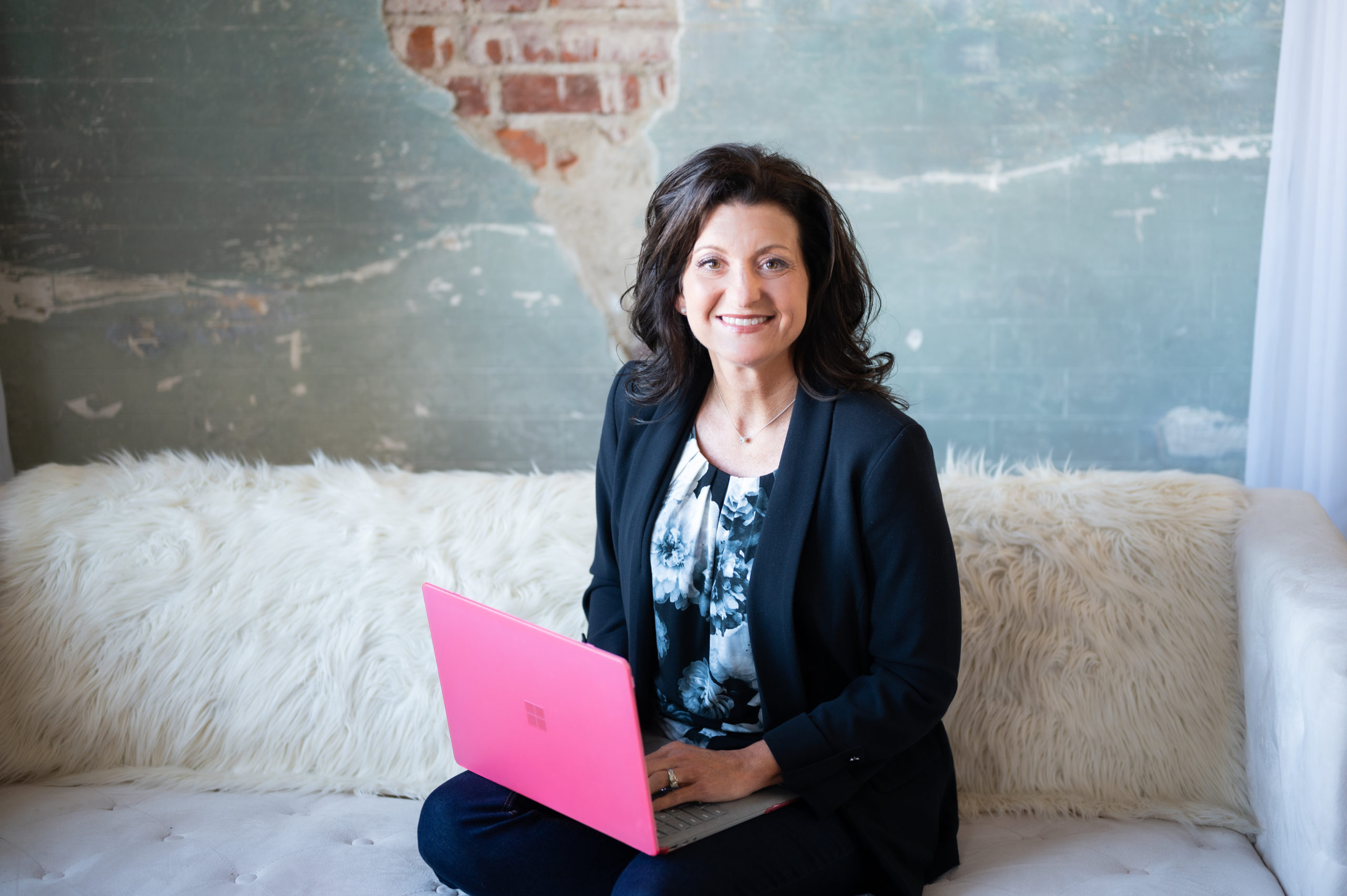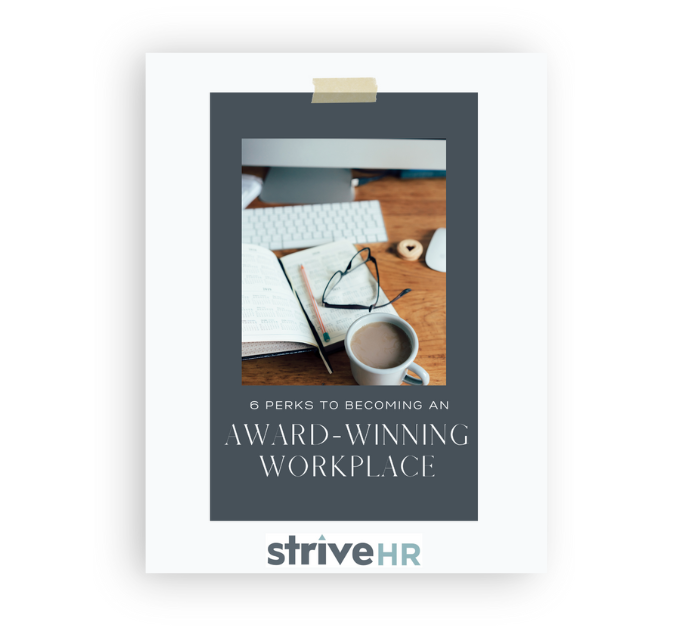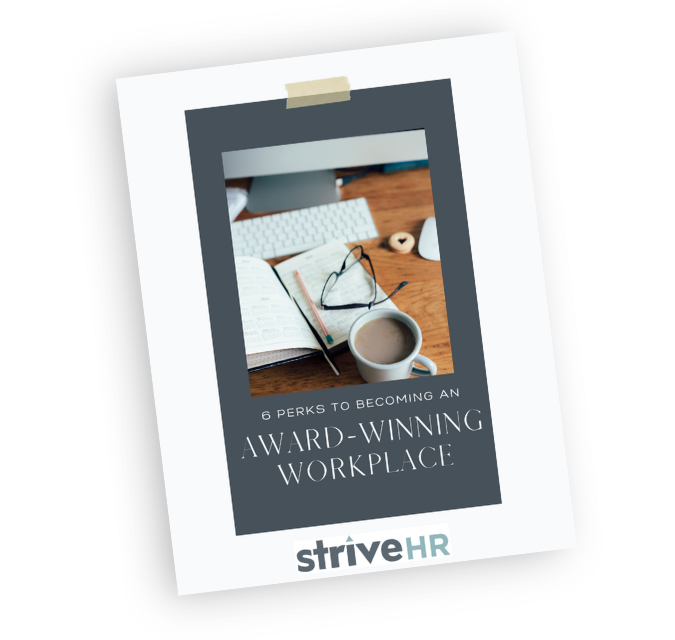Cassi Vanderpool, Chief Operations Officer with Bedel Financial Consulting, shares how frequent check-ins with their employees and intentional involvement by the leadership team has helped them keep a pulse on what is important to their employees.
Cassi Vanderpool is the Chief Operations Officer at Bedel Financial Consulting, located in Indianapolis, IN. Bedel Financial Consulting has learned that you do not need to be a large organization or have a large team to accomplish your goals with employee engagement and be recognized as a Best Place to Work.
With a staff of 25, this organization has earned and claimed back the status of being a Best Place to Work in Indiana through their dedication to learning what is important to their employees.
We discussed strategies they have put into place to bring in the right talent and to keep a pulse on how employees are feeling. Also, Cassi shared her advice for organizations applying for their first workplace award.
As a smaller organization in the financial services industry, how do you determine who will be a good hire, and how do you define who the right person is for your organization?
When it comes to hiring, the team at Bedel Financial has determined the strategies that have helped them with their hiring processes. The first is that they plan ahead. If they plan to hire an employee in one year, they start the hiring process 6 months in advance. Cassi shared,
“The way that we overcome that has been allowing ourselves the grace to take our time.”
Second, they involve their team members in the interviewing process where they can provide input on the candidate regarding personality and culture fit.
Cassi has taken on the challenge of hiring to think outside of the box and become comfortable with hiring a temporary person to handle entry-level tasks so that Bedel’s experienced staff can focus on their primary responsibilities.
“This has been a challenge, but it has been immeasurable in my opinion to not weigh the staff down because we are taking our time to find the right fit.”
Third, as difficult as it can be to go through this, they recognize as early as possible when someone is not working out for their organization. They understand that if it isn’t a right fit, it’s time to part ways so that that person can find a role that is better for them, and they can find an employee that is a better fit for their organization.
What impact does it have on the culture in your company by going through this process to make sure the candidate you hire is the right person for the role?
The team members at Bedel Financial have been very open to meeting with candidates during the interview process. For some, this responsibility takes them outside of their comfort zone, but they understand what contribution they are making.
Cassi encourages the employees to think about “If you would like to work with them every day for the next 10 years, great. That’s what I need from you.”
Cassi knows that she can verify the candidates experience and skill set. She values her team members’ opinions and wants them to feel a part of the hiring process. Managers are not involved in these discussions so that the candidates can feel open to ask questions of these team members, as they are interviewing the company just as the company is interviewing the candidate.
What strategies are you creating that enable you to focus on employee engagement?
Managers are encouraged to be very involved in employee engagement to make sure every employee feels valued. Cassi empowers the managers to be the voice of their team on every level. She coaches them to ask their team members questions such as:
“How’s that project going?”
“Do you feel like you have the tools to do their job?”
“What has been challenging for you this past quarter?”
With managers asking these questions of their employees and sharing feedback with leadership, it has helped to break down barriers and make employees know they are valued. Why? Because they ask, and they take the time to listen.
The leadership team holds themselves accountable to do the same. They have found it a struggle in the past to be visible and to be present, especially with remote staff, which is why they now make a deliberate and intentional effort to engage with all employees.
Because they are making that effort, they feel it has been helpful even by asking simple but important questions about their family, kids, and even their pets. It is important to them that everyone is heard and feels checked in on.
How do you make sure the different methods you are using for employee engagement are working, and how are you measuring them?
Everyone at Bedel Financial also does a light check-in when they meet with their managers. When the meeting begins, both identify what color represents how they are feeling that day. Here’s how it works:
GREEN – “I’m great. I’m excited to be here. I can fully engage. I have no concerns. Nothing is distracting me right now. Both work and life are great. Home is great. I’m happy to be here and I can fully engage.”
RED – “I’m overwhelmed either at home or at work. It’s going to be really hard for me to focus during our meeting time today, but I’m here. And that’s the best I can offer right now.”
YELLOW – You’re kind of in the middle. Some employees even get playful with this and make up what color they are especially if they are in between two color distinctions that day.
They identify how they are representing themselves that day by sharing what color describes their mood. If it is anything but a green, the manager will then proceed by asking more to see if help can be offered. These light check-ins happen at every meeting, even the leadership team meetings.
“It gives them the opportunity to take away some of the subjectiveness of it and just say I’m red, I’m green, I’m yellow. Nothing more to share. I’m fine, move on. Or just we can delve in further.”
By employees identifying how they are feeling at the start of a meeting, it empowers them to ask for permission and grace from their manager or their team by saying how they are feeling.
I have a feeling many reading this may be implementing this idea!
They also offer more engagement on the fun side. They recently had a “truffle-off”. This then led to additional ideas by employees to show off their baking and culinary talents to interact with their coworkers. It sounds like a chili cook-off may be in their future!
With benefits always top of mind to Bedel, what impact does a strong benefit plan have on retention of your talent?
Getting feedback from employees anonymously from the Best Places to Work survey, has been very helpful to determine what employees value, as well as which they feel are not as important. This coupled with reviewing current benefit offerings helps Bedel to remain competitive with what they offer.
With having a smaller workforce, they have paid very close attention to not only what is available for them, but what will be valued by their employees. They have added volunteer time off, which encourages employees to get engaged in their community, as this is part of their culture. In addition, they have added a wellness program that offers paid time off to those who participate. These are results of feedback provided by employees.
When asking Cassi what impact adding these benefit offerings has had on your workplace culture, her reply was, “We have a happy team.”
In fact, they have not experienced resignations in the past 5 years. This employee retention speaks volumes about their workplace culture and engagement.
Tell me about the intentional involvement your leadership team has when it comes to focusing on your employee engagement.
Leaders at Bedel Financial make it a priority to make sure they are involved. They are there as a team member, not just as a leader. Their intention is to make sure they are accessible and present.
On average 80% of the leadership team is in the office every day. They strive to be engaged with everyone, to be playful and communicate with the staff on what is going on. They feel the extra effort they are placing to do this is well worth it.
What was needed on your part to get the rest of the leadership team on board to apply for Best Places to Work?
The first question Cassi’s leadership team asked was, “Is this pay to play?” followed by “If we buy a table at the banquet, do we get the award?”. Cassi told them as it was their first time to apply and those should not be their motivation for the award. Her additional reply,
“My motivation right now is to use this as a tool to gain feedback and get input from the staff.”
YES! That’s the focus organizations should have when they begin their award-winning workplace journey!
Cassi also wanted to make sure how they are spending their money, effort and time evaluating their benefits and engagement levels was working, and she felt using an assessment such as Best Places to Work would help them achieve that goal.
They have tried other surveys in the past and felt anonymity was a concern. There was also a concern that the other surveys did not get deep enough into the heart of what they needed to hear from the staff. They wanted to utilize Best Places to Work as a litmus test.
“If we don’t win, it’s okay. We had no expectations of winning the first time we applied.”
Their motivation was not to win the award.
“It was how do we make sure that we are being good stewards of the time and the energy that our staff are putting in each and every day. That we’re asking them, ‘Are you happy? And if not, tell us why and what we can do to fix it’.”
What has surprised you the most when you applied for Best Places to Work?
Cassi was surprised by how quickly the staff responded to the survey. They provided the communication to the employees to launch the employee engagement survey and they had an 89% participation rate within the first week!
What also surprised Cassi was how open the employees were with their feedback, both with positive comments as well as areas for improvement, and fortunately, they had more positive feedback than negative. She attributes the high response rate and honesty of employees to the fact that it is really anonymous.
“It gave them (employees) a lot of freedom and took away any concern that they would maybe somehow be identified if they were giving feedback that was not great. But I was just blown away by how many people were excited to give us their thoughts. “
How many years has Bedel Financial applied to be a Best Place to Work?
They have applied for 4 years to be a Best Place to Work in Indiana. One year they did not earn the award. As disappointed as they were to not win the award that year, they found a positive. Cassi says they learned other ways other companies were incorporating other opportunities that Bedel Financial had not yet considered.
“It kept us from coasting.” said Cassi
This set the stage to evaluate what has changed and how they are doing now compared to prior years. They acknowledged the competition was able to offer benefits that Bedel Financial does not offer. However, their overall scores had not lowered from previous years which affirmed the employees were not unhappy.
“It kept us on our toes and gave us a little bit of hunger to get back on the list.”
They asked themselves, “What do we need to rethink so we can get back on that list?” This gave them the nudge to see what else they could be offering and what they could be doing better. The following year, they were recognized as a Best Place to Work in Indiana.
What advice do you have for a company that is applying for an award for the first time?
Cassi’s advice is to not put pressure on your staff, nor to tell them that you are doing this because you want to be a Best Place to Work. She feels this is an opportunity to see how you are doing, but to not expect to win. Although she understands it can be disappointing to not make the list. She encourages anyone applying to see this as a baseline for you to track how you are doing and how you are improving going forward.
She encourages organizations of all sizes to get a measurement of your employee engagement, to set a target percentage and to strive to get better.
“This gives your staff an opportunity to be very, very honest and an opportunity to identify some really big areas that you are completely missing with your team. It gives you the chance to get that feedback and make those changes before you start to see the consequences of staff turnover, low morale and lack of engagement.”
In closing, I ask all organizations being interviewed for this Award-Winning Workplace series this question…What is your success story that you want the striveHR audience to know about Bedel Financial Consulting, and how you have not only earned, but maintained an award-winning workplace status.
Cassi and the team at Bedel Financial have a success story that many wish they could claim. They have experienced zero turnover. She says this is not just because of becoming a Best Place to Work, but because they have revised the way they engage with their staff, it shows they are making them a priority.
“The success of going through this process as it has 100% shifted the way that we look at how we treat our staff and we have made them a priority.”
striveHR Recommendation…
The leadership team at Bedel Financial Consulting asking if applying for Best Places to Work was a “pay to play” or an automatic win if they buy a table at the awards banquet are common questions from those who are applying for their first time. As the person leading your employee engagement strategies at your organization, talk to your leaders about the reasons to apply for workplace awards such as benefiting your recruitment efforts, positioning your organization within your industry and most importantly, getting feedback from your employees on how they feel about working for your organization. It’s normal to want to win the first time you apply. After all, you are looking to earn accolades for the great things you are doing for your employees. Defining your WHY will take you further through this journey than getting the trophy for winning the award. Decide as an organization why you are seeking this recognition and let that be your beacon on this journey to becoming an award-winning workplace.
Connect with Cassi
Did hearing this success story motivate you to learn more? Check out the 6 Perks to Becoming an Award-Winning Workplace.
If you would like to nominate your organization to be interviewed on our blog, email striveHR to start the conversation.
Disclaimer: This post contains affiliate links. This means I may earn a commission should you choose to sign up for a program or make a purchase using my link. It’s ok – I love all of these companies anyway, and you will too!




